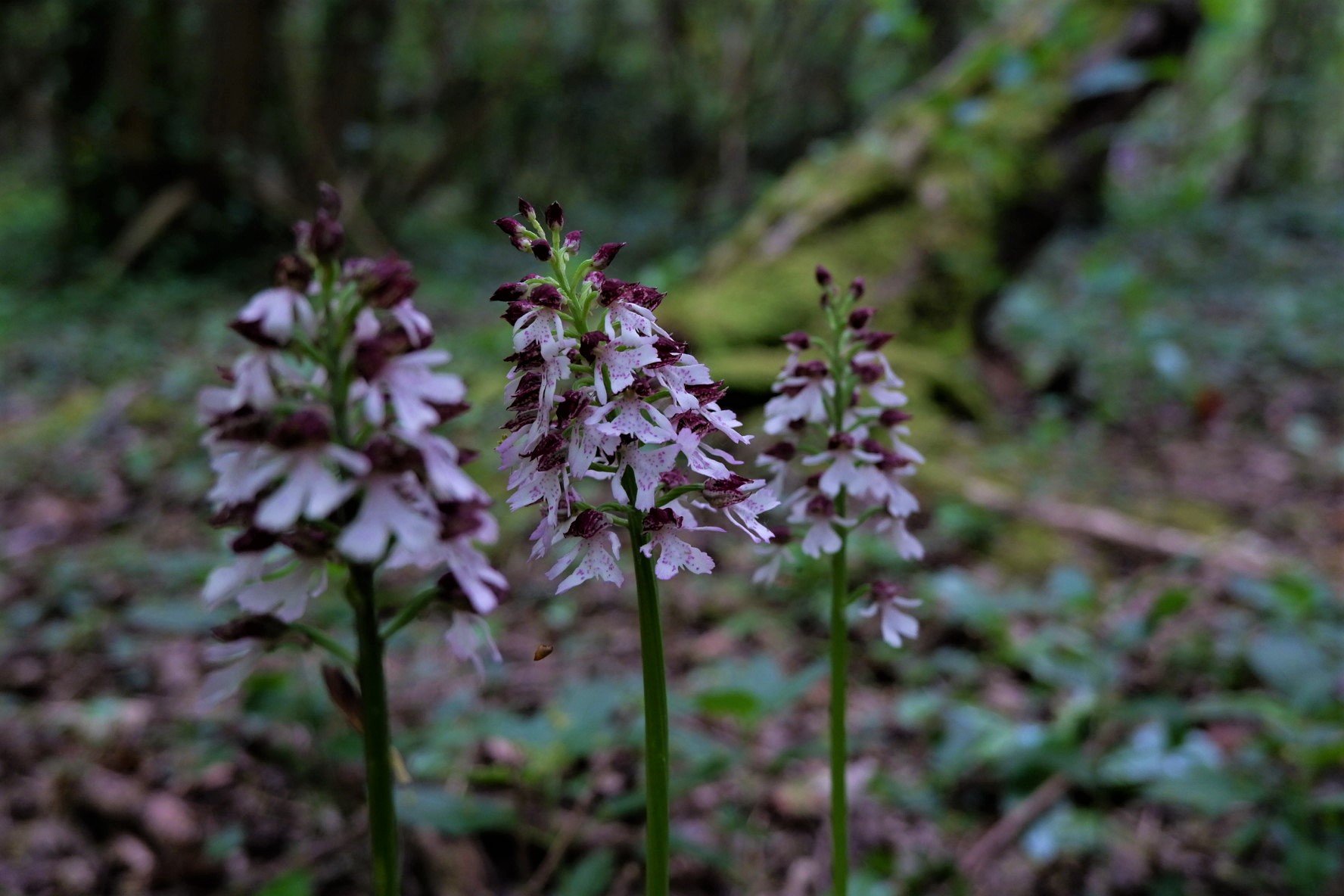Impact of the Adisham New Town proposals on the Ileden and Oxenden Woods SSSI and adjacent land
The proposed development of a ‘garden community’ at Site R1 in the Draft Local Plan represents an existential threat to the flora and fauna of the Ileden and Oxenden Woods SSSI and adjacent meadows, scrub and agricultural land. The SSSI is designated for its nationally rare woodland stand and the rich ground flora and breeding bird community that these woods support. It is a unique site that wholly deserves the national protection its SSSI status affords and whose special interest must be conserved and enhanced.

Firstly, to establish the importance of the SSSI site in question, we should review the species currently present at the site.
These woods themselves hold one of the country's largest populations of Lady Orchid, a nationally-rare species classed as Vulnerable on the GB Red List for Vascular Plants, almost completely confined to Kent's chalk landscapes (and hence its recent designation as one of only three Kent Biodiversity Strategy plants). Alongside the Lady Orchid, the SSSI’s citation highlights the presence of the Narrow-Lipped Helleborine, another nationally-rare plant.
Botanical records show that the woods are also home to several other nationally and locally rare plant species. Lesser Butterfly-Orchid and White Helleborine are both listed as Vulnerable on the GB Red List for Vascular Plants, while Birds-Nest Orchid, Trailing Tormentil and Wild Strawberry all occur throughout the SSSI and are listed on the Kent Rare Plant Register. Adjacent to the woods and within the vicinity of the proposed development are wildflower meadows containing several other plants listed on the Kent Rare Plant Register, including Field Scabious, Sainfoin, Stinking Chamomile, Fine-Leaved Fumitory and Dwarf Spurge. Cornflower and Wild Clary – also Kent RPR species – can be found in connecting meadows that lie within 1km of the proposed site.
In terms of fauna, a recent survey of part of the SSSI (Woodlands Wood: Ecology of an Ancient Woodland, 2003) identified 16 red list bird species and a further 26 amber list species present. This is an exceptionally high number of rare breeding bird species to be recorded in a single site, exemplifying why the SSSI has been designated for its rich fauna as well as flora. Alongside birds, other protected species present in the SSSI include dormice, badgers, bats and shrews (protected under Schedules 5 and 6 of the Wildlife and Countryside Act 1981).
In the SSSI designation documents, there are 28 listed ‘operations likely to damage the special interest’. The proposed development at Site R1 would likely introduce 6 of these identified damaging operations to the area:
9) The release into the site of any wild, feral or domestic animal, plant or seed: the proximity of so many new households to the SSSI would inevitably introduce a large number of household pets and non-native and/or invasive garden plants into the local ecosystem that are not currently there.
10) The killing or removal of any wild animal, including pest control: the proximity of households in the proposed development represents a threat to local populations of wasps, bees and rodents, through habitat loss as a result of construction and through pest removal when these species encroach on new households.
14) The changing of water levels and tables and water utilisation: 3,200 new homes will unavoidably have an impact on local water levels, which has not been adequately accounted for in the proposals. The SSSI citation highlights how the soil’s drainage capacity is central to the woods’ ability to support biodiversity.
21) Construction removal or destruction of roads, tracks, walls, fences, hardstands, banks, ditches or other earthworks, or the laying, maintenance or removal of pipelines and cables, above or below ground: the area marked for development at Site R1 directly abuts the boundaries of the SSSI woodland. Construction activity within this zone would cause significant disturbance to species within the SSSI through noise and light pollution, and to species moving between the woodland and adjacent fields. A particular risk in this regard is to pollinator activity. For example, the Fly Orchid, a rare plant previously recorded in the SSSI, relies on a specific species of digger wasp for pollination, which is highly vulnerable to local soil disturbance.
26) Use of vehicles or craft likely to damage or disturb features of interest: through construction traffic and increased recreational traffic on the byway running through the SSSI and neighbouring roads. Even now, the SSSI woods are experiencing problems with motor vehicle users leaving approved PROWs and causing damage to smaller woodland paths and their associated flora. This damaging activity would almost certainly increase with 3,200 extra households close by.
27) Recreational or other activities likely to damage or disturb features of interest: such a large increase in the local population will result in an unprecedented swell of recreational users of the public rights of way through the SSSI. This risks significant harm to fauna and flora through the disturbance of shy mammal, bird and invertebrate species and the destruction of plants through trampling.
Alongside these 6 identified operations, a further damaging impact of the proposed development would be light and noise pollution, resulting from several years of continuous construction activity, followed by residential activity. Both light and noise pollution threaten the breeding and feeding activities of nocturnal animals, as artificial light has been shown to disrupt the circadian rhythms of mammals such as bats. These are sites that have never been introduced to artificial light at any point in history. The rare habitats that have grown accustomed to these conditions would change irrevocably.